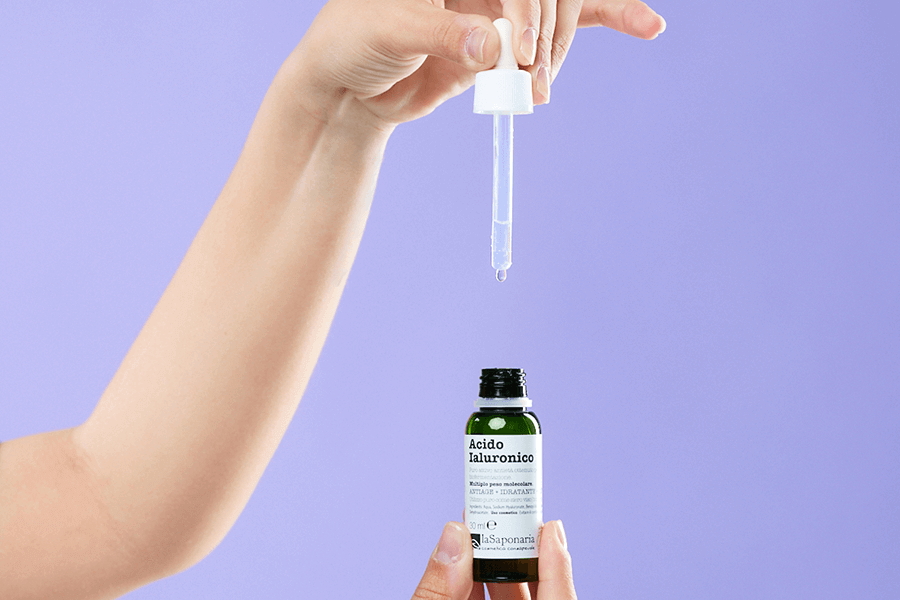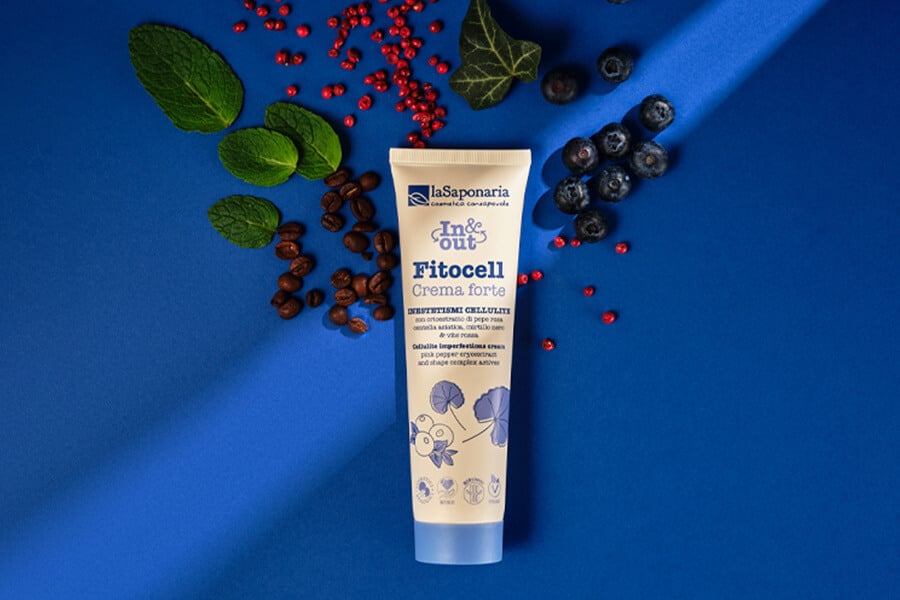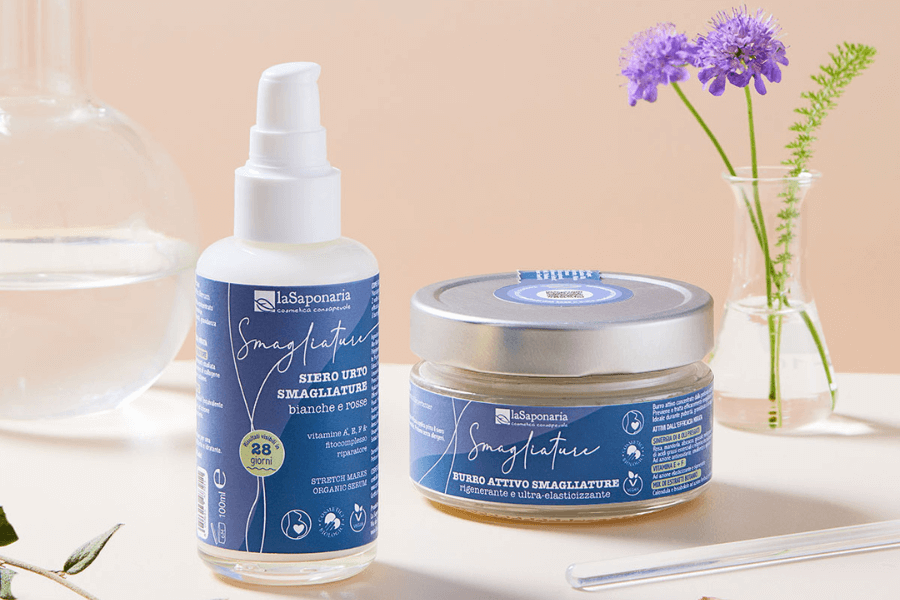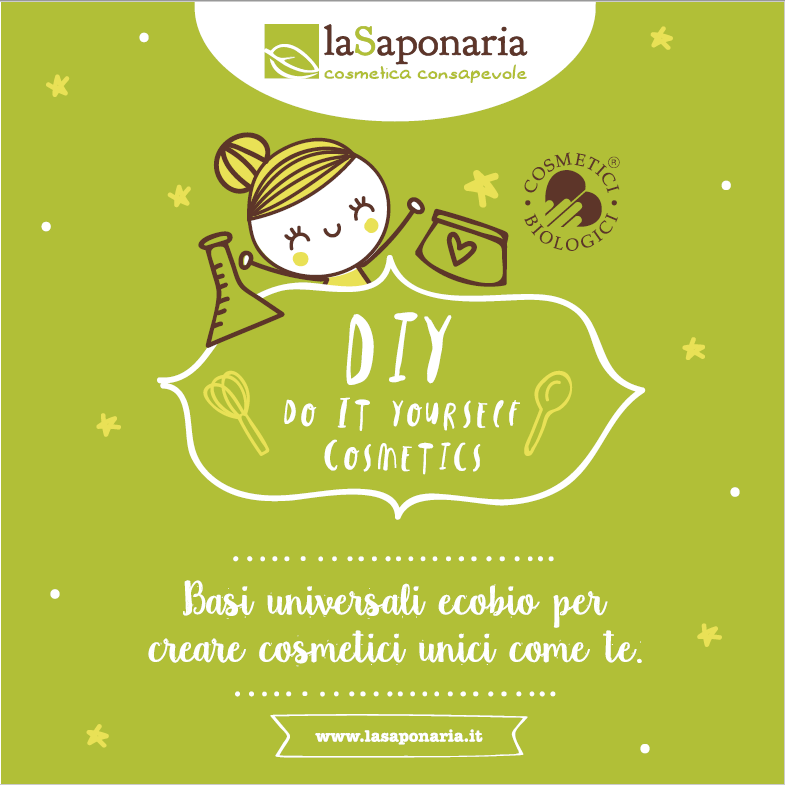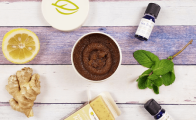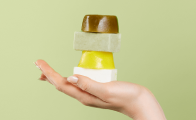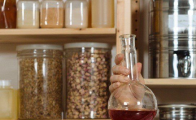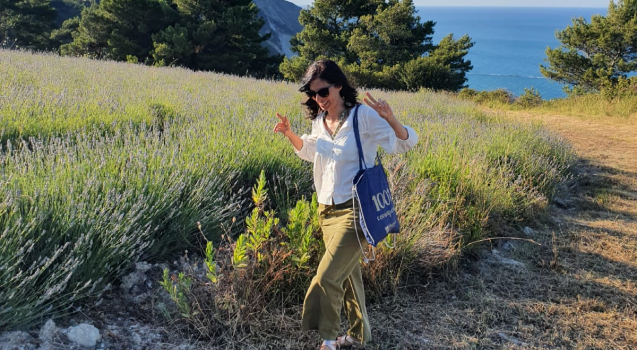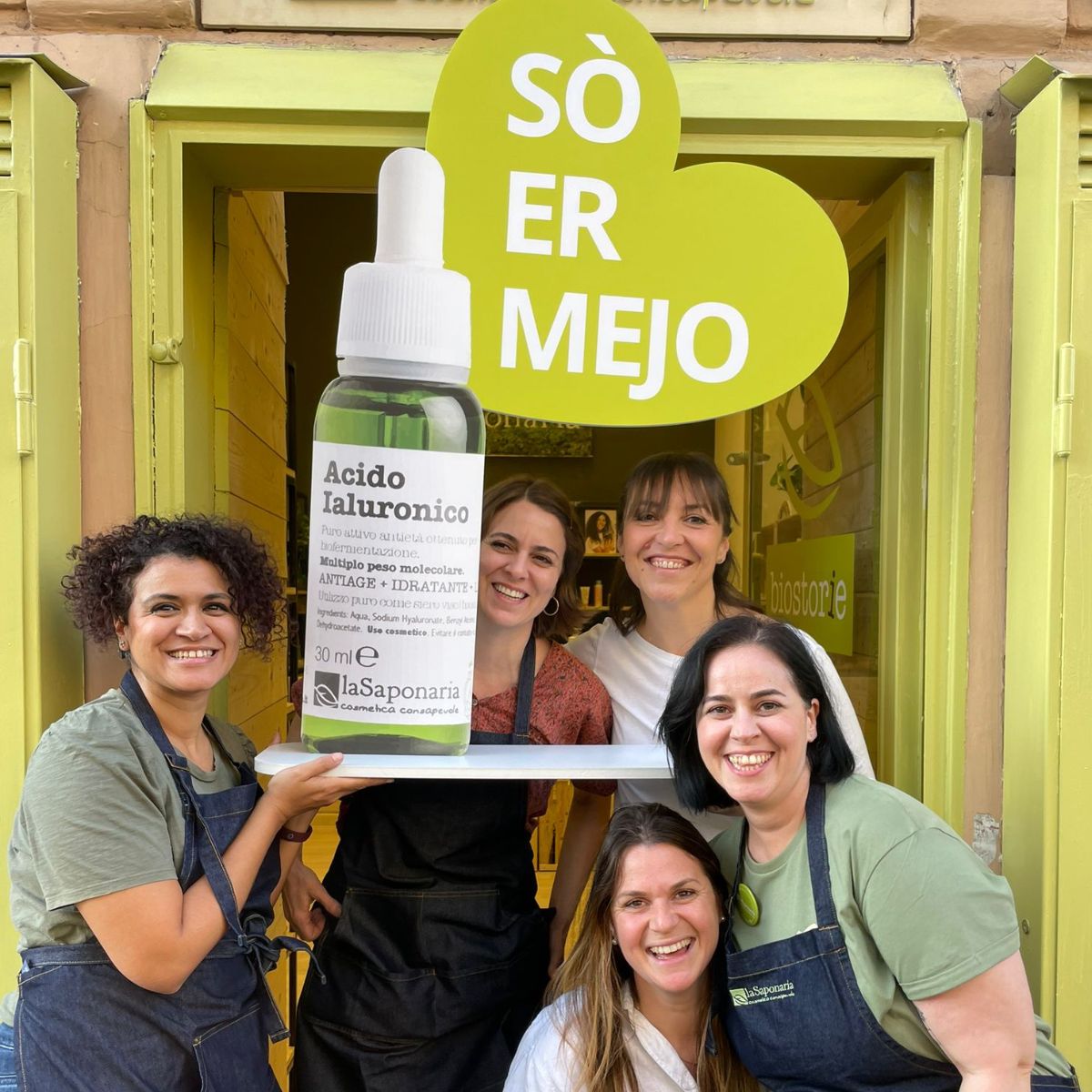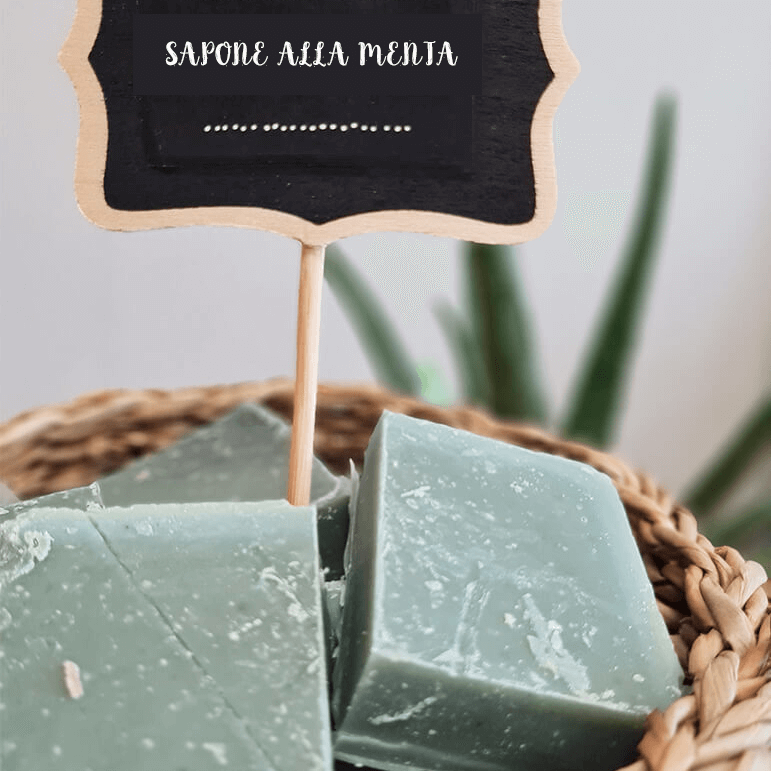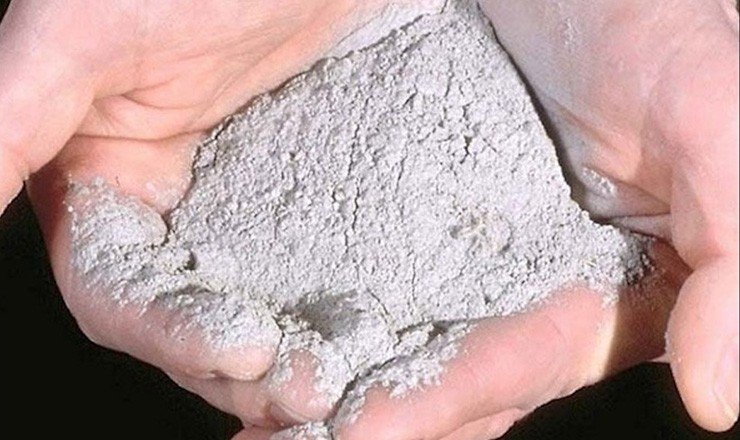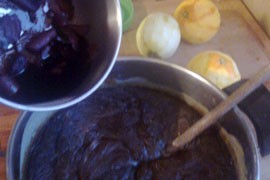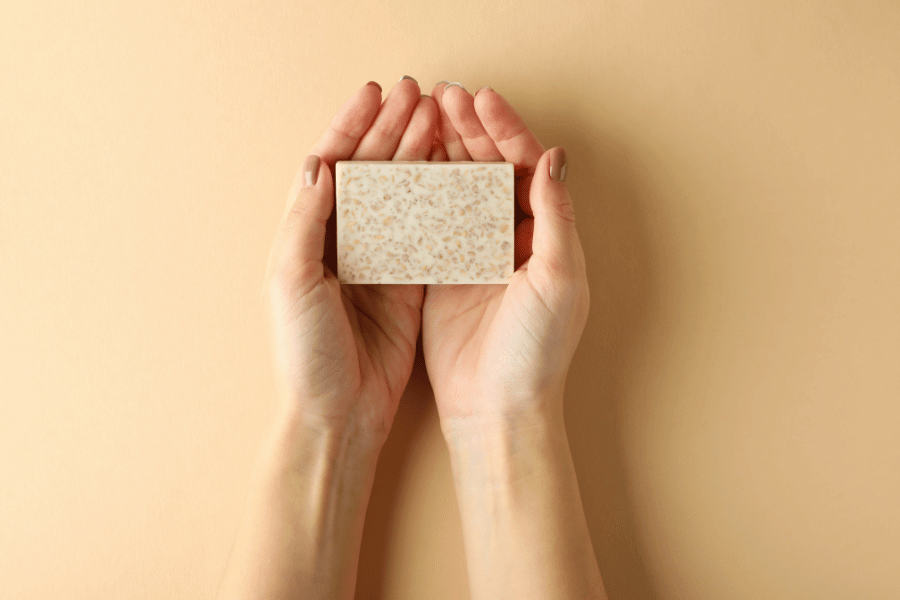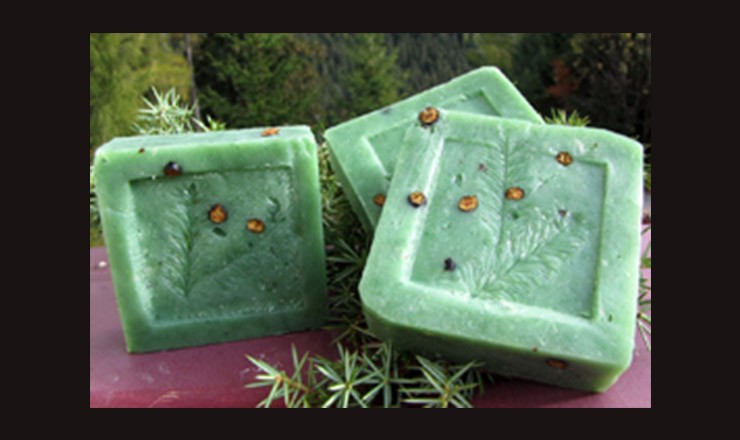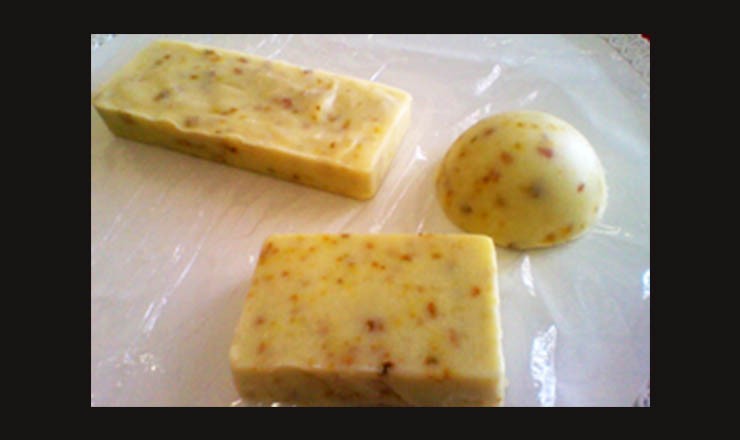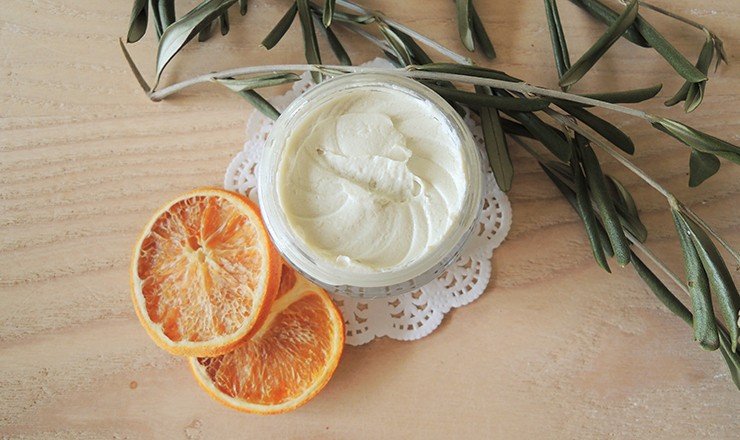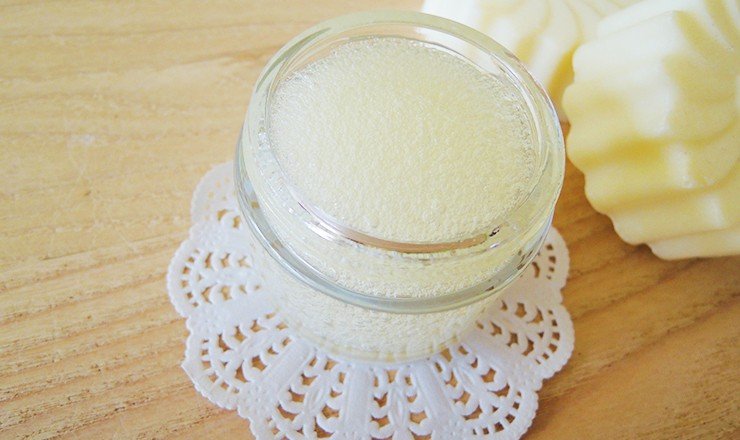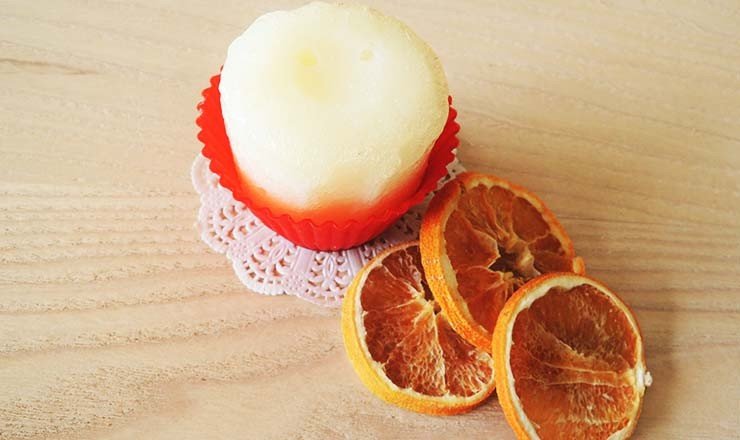Ingredients: Extra-virgin-olive-oil
Here is the procedure for making your own homemade mint soap using the cold process. Always remember to work with gloves, goggles and an FFP3 filtering face mask. Enjoy the whole process!
Summer is approaching, and your skin isn't ready yet? Here are some tips for making your own natural facial scrub at home! Exfoliating scrub is a product that should never be missing from our beauty routines. Whether for the body or the face, it's a product that, when used regularly, helps remove dead cells, promotes cell renewal, and gives the skin tone and vitality. Exfoliation removes dead cells, stimulates the lymphatic system, and aids in the elimination of toxins, improving the facial microcirculation. The result is smoother, translucent, and radiant skin, a healthier and more radiant appearance. Making your own scrub is very simple (and cost-effective!), and it reduces the risk of unpleasant allergic reactions, often triggered by synthetic ingredients or overly intense and aggressive fragrances in commercial products. It's important that the scrub is as gentle as possible to avoid irritating delicate facial skin. Let's look at three simple recipes suitable for various skin types to make our own scrub at home.
When in the 60s I went with friends for a picnic "out of town" to the Roman Castles, we played in the meadows and chestnut woods, falling and rolling among the mint plants that grow there wherever there was a little sun and then we stopped in some trattoria where in the warmth of the fireplace we all ate together at a wooden table the pecorino romano and the porchetta from Ariccia with wild cicely. The mint and cicely soap is made with extra virgin olive oil from our region with the addition of Roman mint leaves and wild cicely flowers collected by me during the summer and dried. The soap mold recalls the shapes of pecorino romano and from this derives the name sapo-rino. Table salt causes the soap to dry very quickly. Even if the soap can be used immediately, it is best to let it dry for at least 15 days. Coconut oil is used to create foam. The yellow / green dotted color is given by the added dried plants.
ace represented by the soap: Trento and the tradition of Vin Brulé (Mulled Wine) consumed in the streets.
Why does it represent the proverb "Saponi e buoi dei paesi tuoi"? Vin Brulé is a sweetened wine cooked with orange and lemon zest, cinnamon, cloves, and a pinch of nutmeg. It's delicious, but above all, it's THE winter drink of Trento! In the city center, at every corner, there's a stall selling it in small cups that warm your hands. Its aroma fills Piazza Fiera, which during the winter is adorned with Christmas markets, and it's a must-have during the holiday season in the villages. If in the summer, after work, people meet in the square for a "Spritz," in the winter, they gather for a Brulè at the Christmas market! It may seem a bit too warm and too spicy to be an aperitif, but it's incredibly tasty and is said to work wonders against colds. So, if you have a sore throat or a stuffy nose, instead of recommending aspirin, they'll tell you to "have a Brulè!" which, with cinnamon and the essential oils of lemon and orange, is truly a remedy. And the beautiful thing is that you can drink it in the street. Despite the early darkness, the snow, and the fact that Trentini are known for their reserve, by the time the shops close, the streets are bustling! Okay, it's true that by nine o'clock, there's no one left... but hey, we're still in Trento, and you can't expect too much when it's minus ten degrees outside! In Trento, Brulè is made with red wine, and there are as many recipes as there are pots it's cooked in, but the base is always the same: citrus fruits and spices. A scent that immediately brings Christmas to mind and warms not only the stomach but also the heart.
Recipe submitted to the "Saponi e buoi dei paesi tuoi" (Soaps and oxen from your own country) self-production contest. Why does it represent the proverb "Saponi e buoi dei paesi tuoi" (Soaps and oxen from your own country)? Because all the ingredients are typical of the Bergamo region, starting with polenta, a dish that accompanies us in both warm and cold weather, honey, a product that is abundant thanks to the differences that characterize my province... plains, hills, mountains. Extra virgin olive oil, also abundant in the areas of Sarnico, Scanzorosciate, etc... Alfalfa because it can be found in all the fields of the rural areas like those of Martinengo, where I grew up with my grandparents, among herbs like mint and basil... Potatoes are a very typical product of Martinengo... But it was a bit difficult for me to incorporate them into the soap...
Recipe submitted for the "Saponi e buoi dei paesi tuoi" self-production competition. Why does it represent the proverb "Saponi e buoi dei paesi tuoi"? Because it contains honey produced in the valley at 1500 meters, juniper berries, and red fir needles collected in the woods behind the house, as well as essential oils of wild pine, juniper, and red fir to evoke the scents of the forest. The soap's green color also recalls the colors of the woods. Additionally, each soap mold was made using a piece of fir wood and two fresh twigs.

